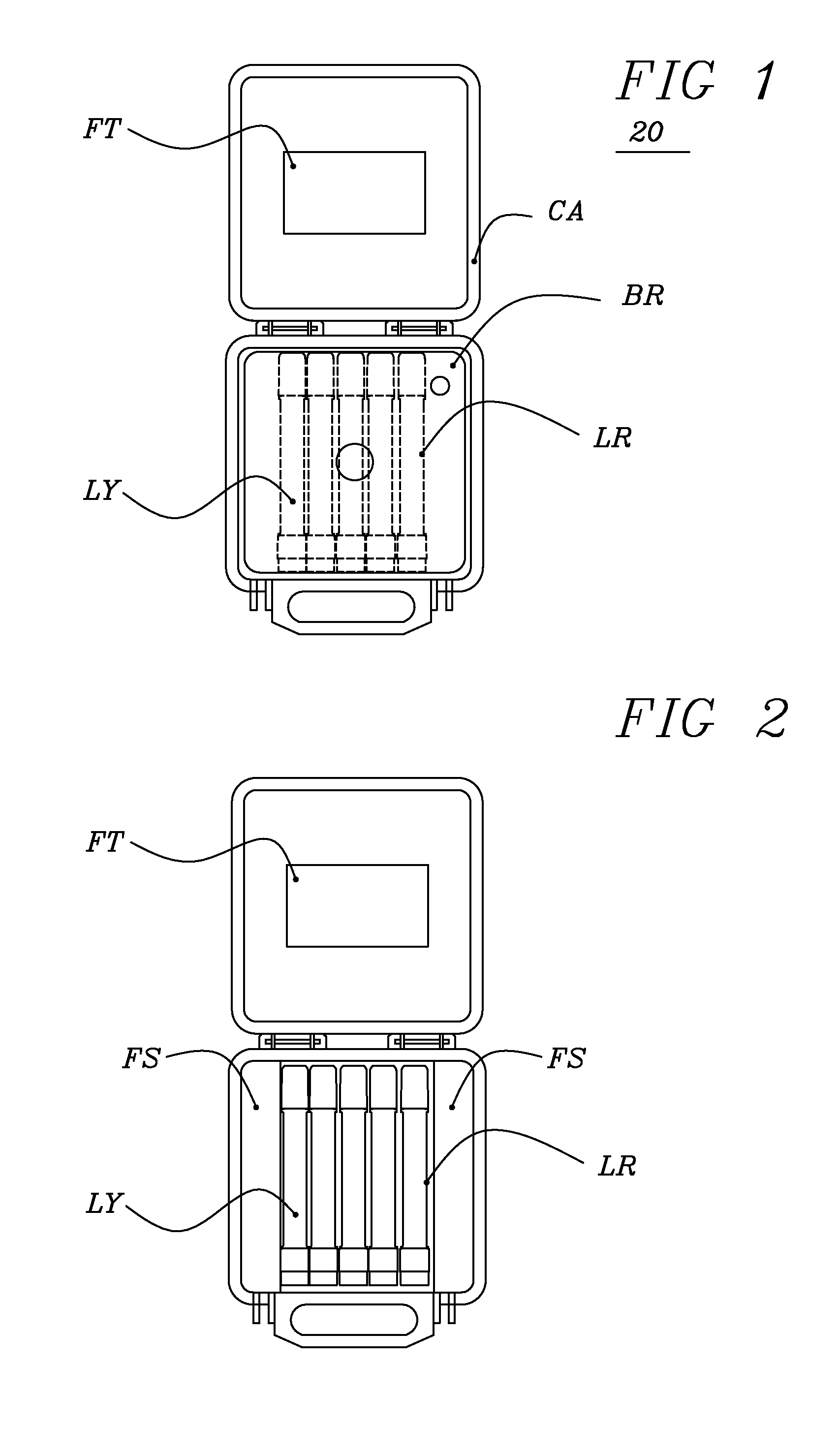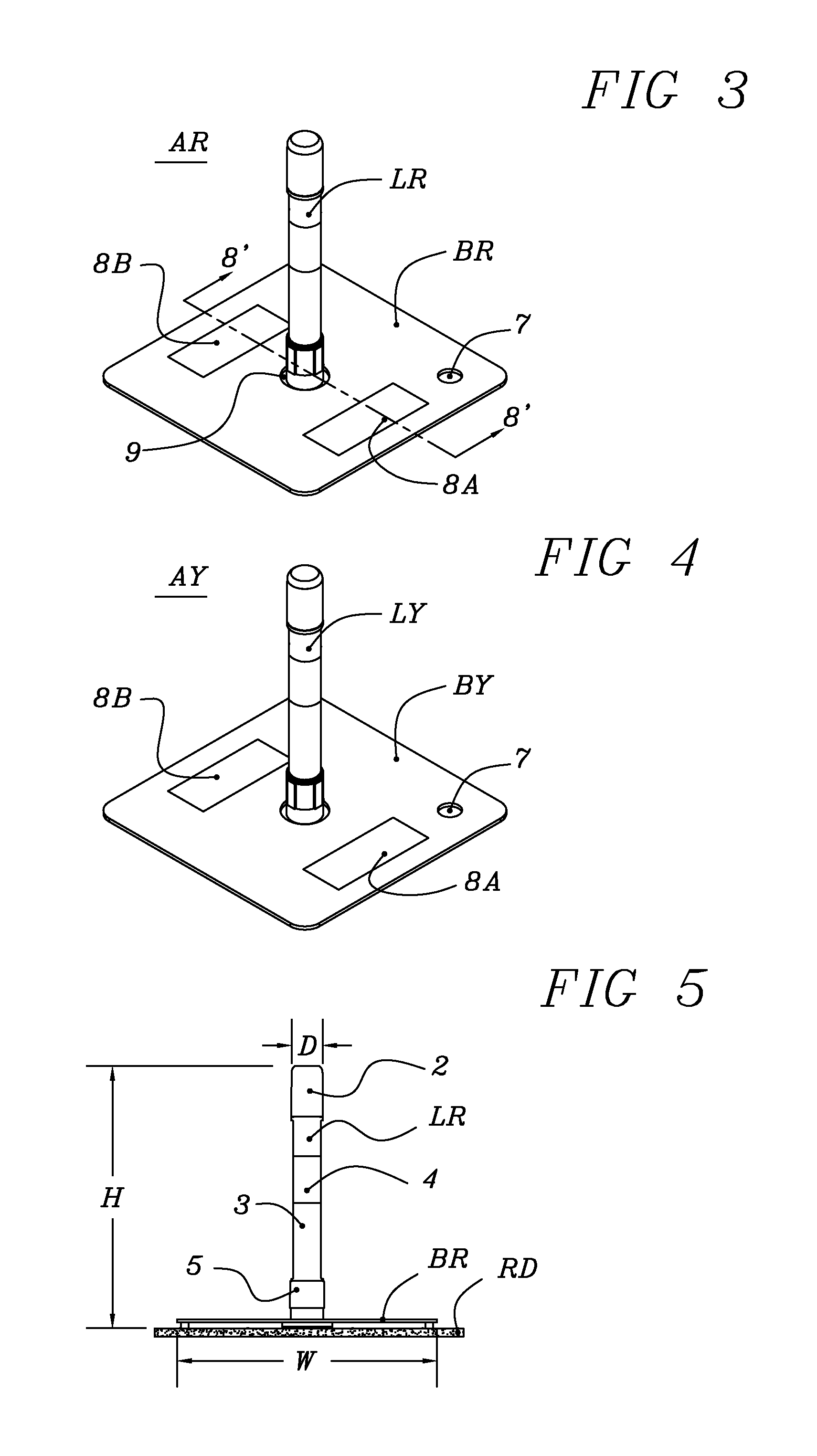Visual Aid For Landing Helicopters
a helicopter and visual aid technology, applied in the direction of instruments, aircraft traffic control, construction, etc., can solve the problems of difficult depth perception perspective to accurately locate the corners of the landing zone, the flashing of five lights can be confusing for the pilot, and the flashing of a xenon strobe is extremely shor
- Summary
- Abstract
- Description
- Claims
- Application Information
AI Technical Summary
Benefits of technology
Problems solved by technology
Method used
Image
Examples
Embodiment Construction
FIGS. 1-12
[0045]FIG. 1 is a top view of landing zone kit 20 the preferred embodiment of this invention, Landing zone kit 20 is a visual aid for landing helicopters. Landing zone kit 20 includes four red bases BR, four red lights LR, one yellow base BY and one yellow light LY all packaged in carrying case CA. Carrying case CA is a typical commercially available rectangular or possibly square hinged heavy-duty carrying case. It is sized to secure and provide compact storage for the components of landing zone kit 20.
[0046]FIG. 2 is similar to FIG. 1 except the weighted bases have been removed. Looking at FIG. 2 the five lights are positioned at the bottom of the carrying case with foam side FS on each side of the lights added to prevent shifting. Foam side FS is minimized to minimize the size of carrying case CA. When packaging the kit the five weighted bases are placed on top of the five lights. Foam top FT is glued to the inside top of carrying case CA to prevent movement of the cont...
PUM
 Login to View More
Login to View More Abstract
Description
Claims
Application Information
 Login to View More
Login to View More - R&D
- Intellectual Property
- Life Sciences
- Materials
- Tech Scout
- Unparalleled Data Quality
- Higher Quality Content
- 60% Fewer Hallucinations
Browse by: Latest US Patents, China's latest patents, Technical Efficacy Thesaurus, Application Domain, Technology Topic, Popular Technical Reports.
© 2025 PatSnap. All rights reserved.Legal|Privacy policy|Modern Slavery Act Transparency Statement|Sitemap|About US| Contact US: help@patsnap.com



